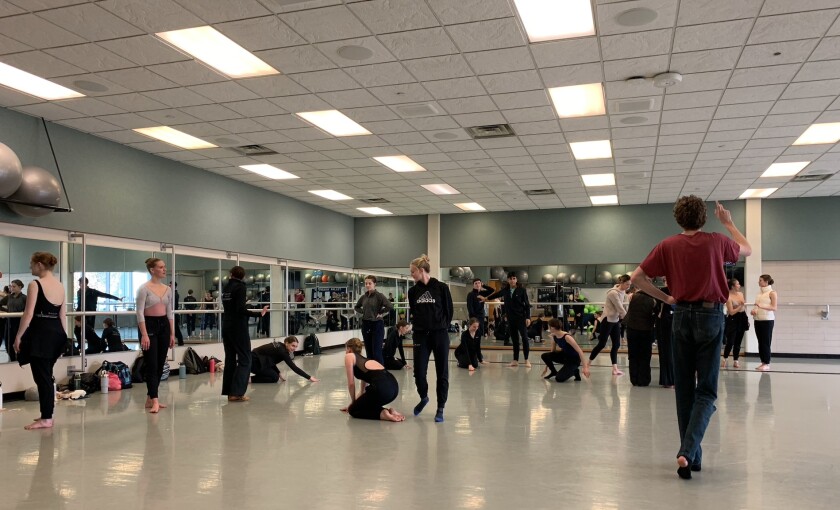With a show as universal as Tchaikovsky’s Swan Lake Ballet, one would think that there wouldn’t be many unknowns to staging a production. However, director Ashley Parov had a vision to make this classic ballet more accessible to ballerinas of all ages. Instead of producing a typical 3-hour-long ballet, Ashley imagined an hour-long family-friendly piece. How then, do you fill in the gaps of the story?
This was the question she brought to me, Belle Frahm, as the dramaturg for this production. Ashley emailed me a few months before rehearsals started with this idea for the ballet. I gladly jumped on board, although both adaptation and ballet were foreign to me. Ashley gracefully reassured me that we would both figure it out together, and through a few sessions of collaboration, we decided to add a narrator character who would be the only person to speak in the ballet. This way, the dancers could use ballet pantomime (a form of gesturing that almost looks like “ballet ASL”) to communicate their thoughts, and the narrator would tell the parts of the story that were cut from the show. He would also be a friendly face to the young audience.
As I began to work on the script, Ashley and I both went back and forth on the narrator’s tone, trying to assess just how young the audience would be, and what parts of the story were already self-explanatory. A big focus for us was the ending, as the traditional Swan Lake concludes with the white swan, Odette, jumping off a cliff to her death. She is then soon followed by her true love, Prince Siegfried. However, we didn’t feel this would be appropriate for an audience of children coming to what’s supposed to be a wholesome BYU ballet. Ashley and I played with the option of having the narrator describe their peaceful ascension and a “happily ever after” moment. Ultimately, however, we felt that Tchaikovsky’s score was just too powerful to speak over. (Interestingly enough, when this ballet was originally performed in 1877, critics deemed it “too noisy and too symphonic” for a ballet. Today, it’s considered some of the best music.)

While we were working on adapting the script, Ashley thought it would be helpful if I could provide an actor’s workshop for the dancers. I reached out to some acting major friends in the theatre department and found Daniel Summerstay, who was willing to lead a workshop for us! As seen in the picture above, he passionately led the dozens of dancers in “emoting big,” something fairly unknown to the poised ballet dancers. He was such an acting powerhouse that Ashley offered him the role of Narrator following the workshop. Daniel proved to be instrumental in this process of bringing the story of Swan Lake to life.
Here’s what Daniel said about his experience:
“I was a little worried when I first was brought on as the narrator because I thought that people would be going to the ballet with expectations for a really transcendent experience with the high and exceedingly elegant art form that is classical ballet. I worried that my matey narration and interaction with the other characters would be a jarring interruption to their enjoyment of the ballet, but, in actuality, the response from the ballet directors and lay audience members was overwhelmingly positive. Contrary to missing the traditionalism of their ballet experience, they all actually seemed to feel the additions made the plot element of the show accessible and helped them better appreciate the dancing better. Even though I was merely a performer, and not the director making the choice for the ballet, or the writer composing the script, I still get people who watched Swan Lake recognizing me and thanking me for helping them through the show.”
The family-friendly script ended up clocking in at about 80 minutes with laughter, high stakes, beautiful dances, and pure talent overflowing. We met experienced ballerinas who reminisced about their time performing in Swan Lake and starting ballerinas who dreamed about one day performing it onstage. They made their own origami swans and practiced their ballet pantomime in the lobby display before and after the show. Overall, we all had such a great time growing together in making Swan Lake. Join us next January to see a family-friendly version of the Sleeping Beauty ballet!




